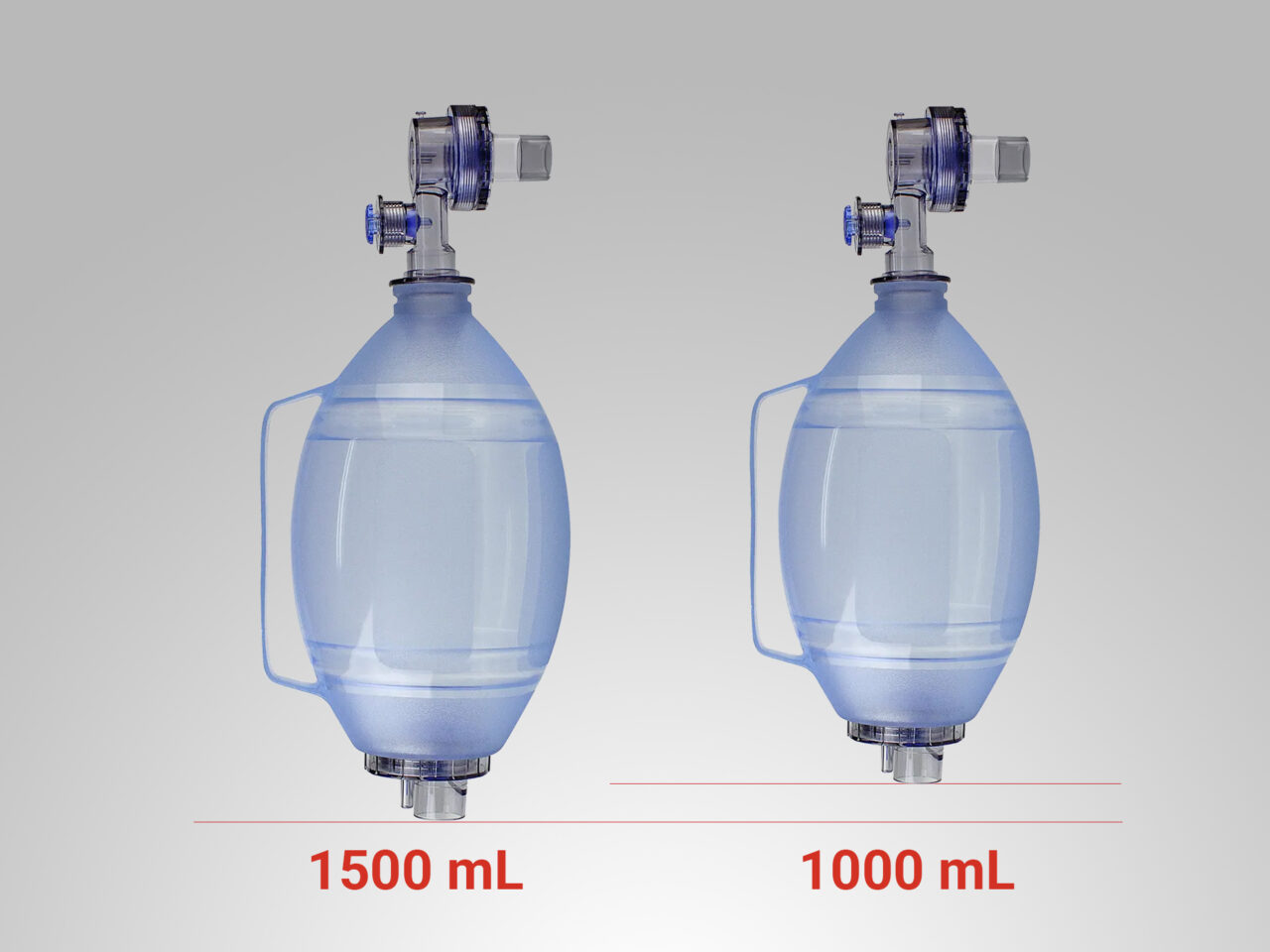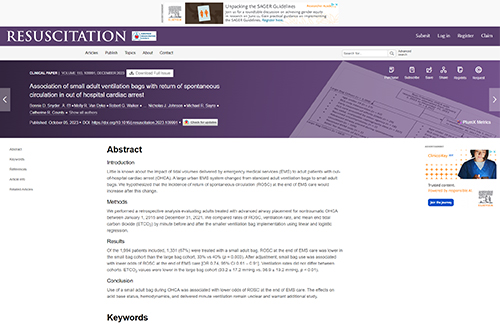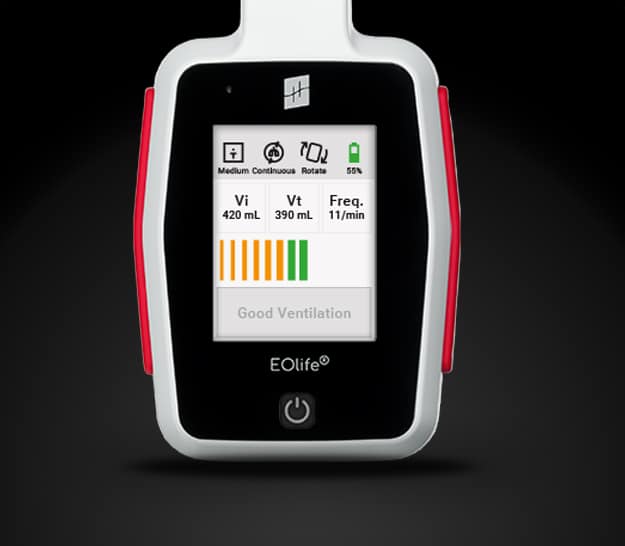While reducing ‘Bag’ size seems to offer a way of reducing the risk of hyperventilation, this move appears to have a negative impact on patient outcomes during cardiopulmonary resuscitation (CPR).
In a study from Snyder et al;[1] 1994 adult out-of-hospital cardiac arrests treated by the Seattle Fire Department were analysed, revealing alarming consequences of this practice: it resulted in hypoventilation, which significantly reduced the chances of achieving a Return of Spontaneous Circulation (ROSC) in this patient group.

In a retrospective study published at the end of 2023 [1], B.D. Snyder and. Al interested in the link between the size of the bag (Normal or Small) used to ventilate adults during Cardiopulmonary Resuscitation (CPR), and the Return Of Spontaneous Circulation (ROSC) at the end of Emergency Medical Service (EMS) care. They also studied the difference in ventilation rates and EtCO2 values.
Therefore, they included 1994 patients treated with an advanced airway (Endotracheal tube or iGel supraglottic airway) for non-traumatic OHCA at the Seattle Fire Department between 2015 and 2021. They were divided in two groups: 1331 patients were treated with a Small Adult Bag (1000mL), and 663 were treated with a Normal Adult Bag (1685mL). The data from the Normal Adult Bag group were collected between 2015 and 2017. The data from the Small Adult Bag group were collected between 2017 and 2021, after such bags were implemented at Seattle Fire Department.

Whereas the authors expected an increase of ROSC linked to the use of Small Adult Bags, they observed a significant decrease in ROSC linked to the use of such bags. The incidence of ROSC was 40% in Normal Adult Bag group, and 33% in the Small Adult Bag Group. Moreover, they observed a higher EtCO2 in the smaller bag cohort, suggesting lower tidal were delivered with small bags, since ventilation rates were similar between the two groups.
Even if the study has several limitations (no precise measures of tidal volume, no contemporaneous control group), it also has many strengths: almost 2000 patients included, ventilation pattern comprehensively evaluated using capnography, audio recordings and a ventilation identification algorithm available to many EMS systems.
The conclusion of the study is clear: the use of Small Adult Bags is associated with a lower likelihood of ROSC at the end of EMS care in non-traumatic adult OHCA.
Ventilation Feedback Devices (VFDs) such as EOlife emerge as a unique solution: it provides a real time feedback on the administered tidal volume, allowing to prevent both hyperventilation and hypoventilation, still using a Normal Adult Bag.


The ultimate medical device for high-performance manual ventilation.
Measure and adjust in real-time the quality of your manual ventilation. Medical device designed for the manual ventilation of adult patients in cardiopulmonary arrest.

The ultimate training tool for high-performance manual ventilation.
Record your training sessions. Analyze your ventilation cycles. Improve your manual ventilation practice.


